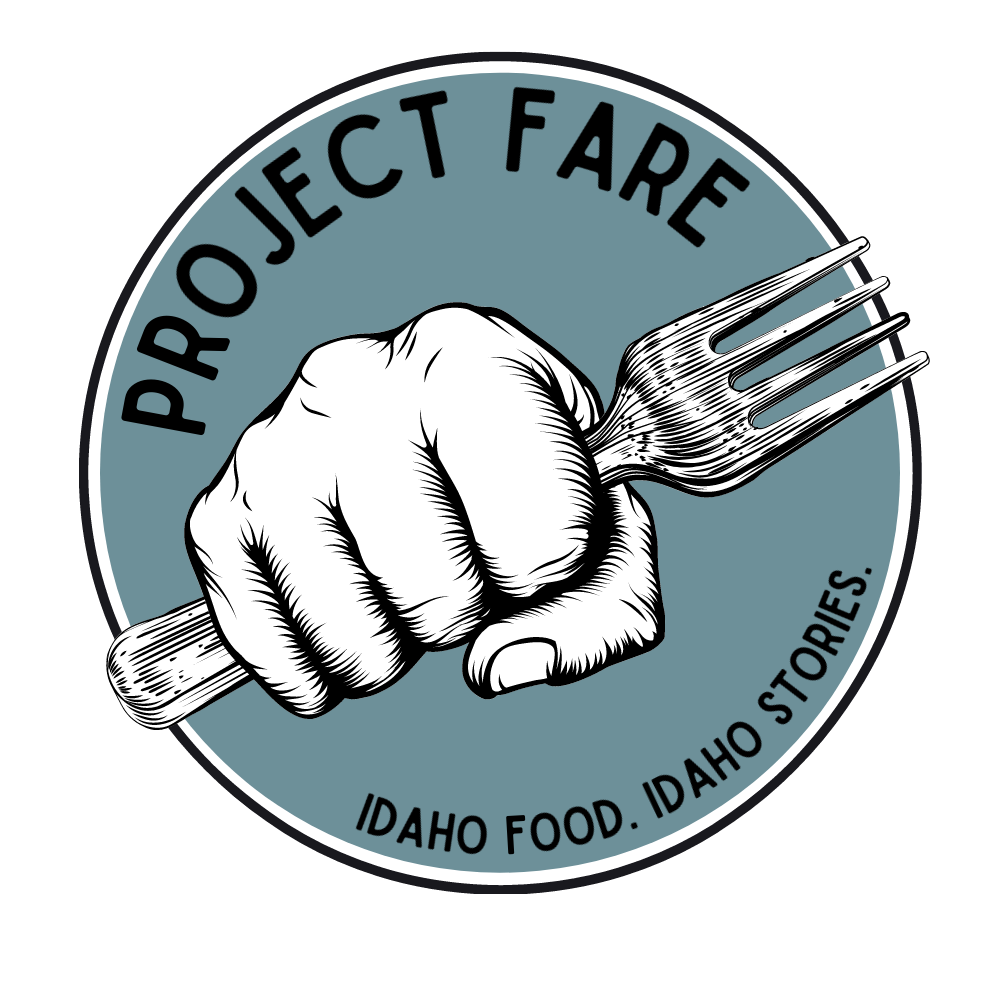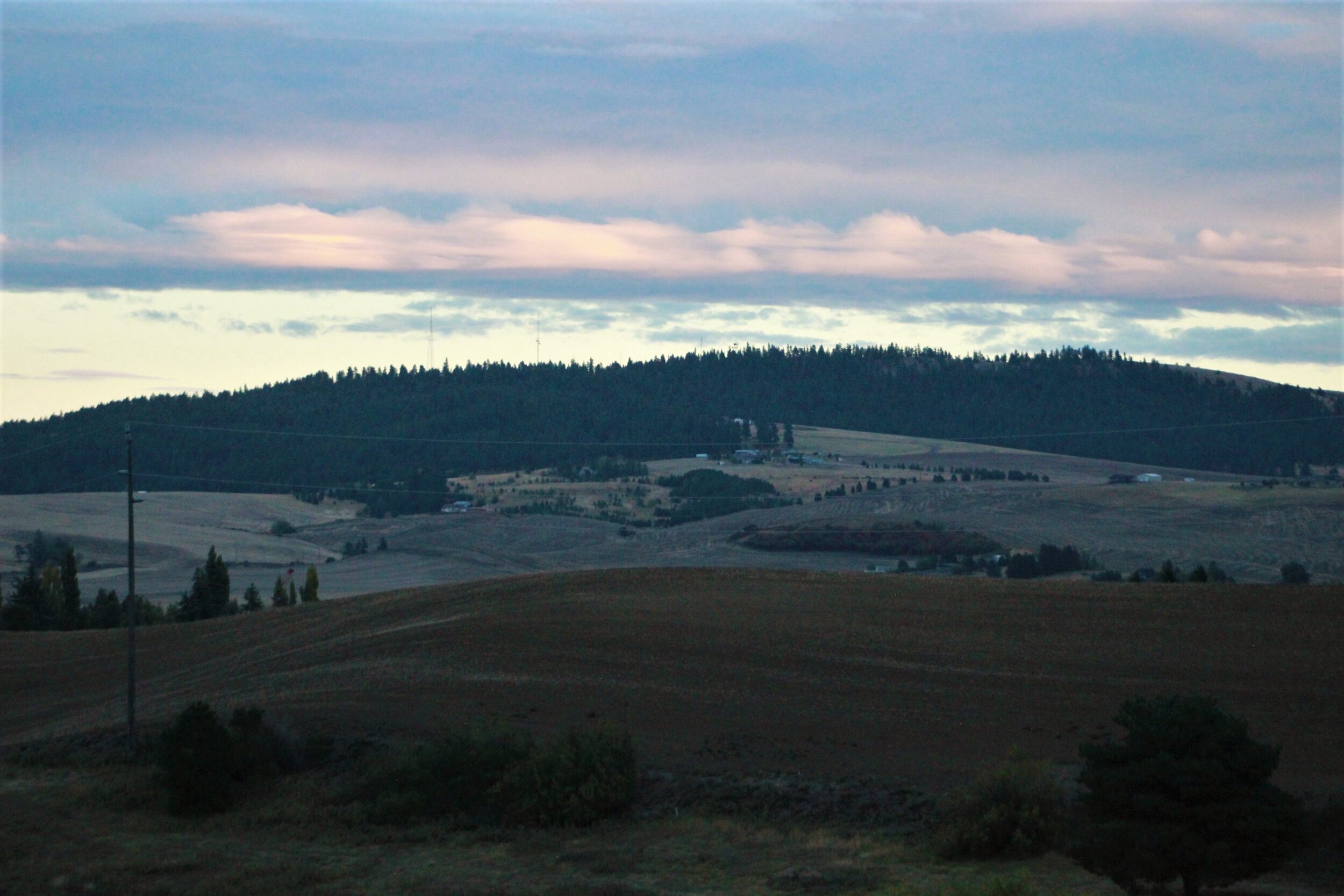Fires And The Food Chain: Wildfires Could Affect Idaho’s Food Industry More Than We Thought
Image courtesy of Anteia McCollum
After a few extraordinarily hot summers, the base of Idaho’s economy is beginning to see potential major changes
Written by Anteia McCollum
As record-breaking heat, smoke and wildfire plagued the Pacific Northwest this summer, many of Idaho’s agricultural businesses were affected by the enduring summer, droughts and long fire seasons of the past few years.
The summer of 2021 was an especially hot, smoky one with July being the hottest month in recorded human history and an unusually early start to the smoke lingering in the air. While some places hadn’t seen any serious effects, local growers and ranchers at the base of our food chain were dealing with lessened crops, wildfire, lack of rain and smoke exposure.
Idaho agriculture is an industry that brings billions in revenue to the state every year, especially with dairy products, cattle, hay and wheat. But with the lack of rainfall and extended periods of smoky skies, ranchers relying on the weather for their water were in a poor position for abundant harvests this year.
At the University of Idaho, a group of researchers and collaborators are in the beginning stages of a project examining how wildfire smoke can affect dairy production in cows, which could have major implications for dairy industries down the road.
UI’s assistant professors Amy Skibiel and Denise Konetchy, associate professor Pedram Rezamand and professor of wildland fire science Alistair Smith are collaborating to compile data from three Pacific Northwest dairy farms, two of which are in Idaho and the other in Washington.
Heat, smoke and fire in Idaho’s food chain
After compiling general data from hundreds of cattle at two of the three farms, their preliminary results showed that during periods of smoky skies, with high amounts of particulate matter in the air, there is a higher instance of illness among the cows.
Image courtesy of Anteia McCollum
“Basically, the producers put in that the cow is sick, but they don't necessarily indicate what it is but just something is bothering the cow, they have general malaise and probably a high temperature,” Skibiel said. “We found a connection between high particulate matter, and the incidence of illness in cows. We also found a relationship between particulate matter, concentration in the air and calf mortality. So when wildfire derived particulate matter was high, we also saw a concomitant increase in the risk of calf mortality.”
They are waiting for word on a proposal they submitted to the U.S. Department of Agriculture which would allow them to take a deeper look into how smoke affects cattle without the added effects of heat that naturally come along with wildfire smoke.
“We also wanted to be able to set up an experiment where we can actually create conditions similar to what happens (naturally), but we have control of how much smoke,” Rezamand said. “We definitely are hopeful to see not just the short-term impact but also the long-term impact.”
In a separate, but similar, study in the summer of 2020, UI graduate Ashly Anderson worked with Skibiel and Rezamand to take a closer look at how smoke affects dairy cows with a small herd of 28 on campus.
The team of researchers monitored milk production and content, took blood samples before, during and after smoke exposure as well as looking at how pregnancy and calf development from birth to weaning were impacted.
In the team’s findings surrounding the extreme smoke event in the first week of September 2020, they saw almost three pounds less milk per cow, per day in their small herd and an increased instance of mastitis. They also saw increased standing activity from the calves they were monitoring.
“So it seemed like two weeks after the wildfire event, (the cows) were starting to recover again,” Skibiel said. “But it's very evident when you look at the data, milk yield starts up high, for I think we had about nine weeks of data, before that smoke event, and then it just plummeted.”
Dairy and cattle are fundamental to Idaho’s food chain, but they wouldn’t exist if the cows didn’t eat too. Fields are also affected by the fires and heat, whether from drought or the fire itself.
Image courtesy of Anteia McCollum
“One of the pieces we hope to investigate is how wildfire smoke impacts the plant production,” Rezamand said. “We want to look at it as it relates to feed conversion of the animal. Is it impacting the alfalfa production, are they changing their composition? If so, how is that going to impact animal productivity?”
The team at UI doesn’t know the answers to these questions yet, but they remain hopeful.
This summer brought around one of the worst droughts in the West yet, and farmer’s fields suffered for it. With the cool May, lack of rain and triple-digit temperatures, hay and wheat fields relying on the skies for water were plum out of luck.
As of the last week of September, over 90% of Idaho is in severe drought, according to the National Integrated Drought Information System, and over 60% is in extreme drought. Some farmers reported having roughly half the hay yield they usually do.
Hay and wheat weren’t the only produce affected by heat. At Tonnemaker Hill Farms in Royal City, Washington, many of the cherries they sell which come to Idaho were spoiled by the heat.
“We had an order of bing cherries and we picked them in the morning, washed them and chilled them overnight,” Luke Tonnemaker, who helps run the farm, said. “Then we shipped them off the next morning. They looked good, their stems looked good. But three days later they were just mush because of the heat.”
In addition to the summer of 2021 being the hottest on human record, wildfires have burned over 250,000 acres in Idaho during the 2021 fire season, and some are still going.
All the fire, smoke and heat isn’t just clogging the air and burning fuel. It’s affecting the base of Idaho’s food chains as well; Idaho’s farms, ranches, research and people.



